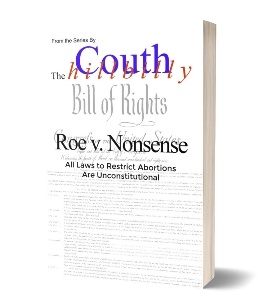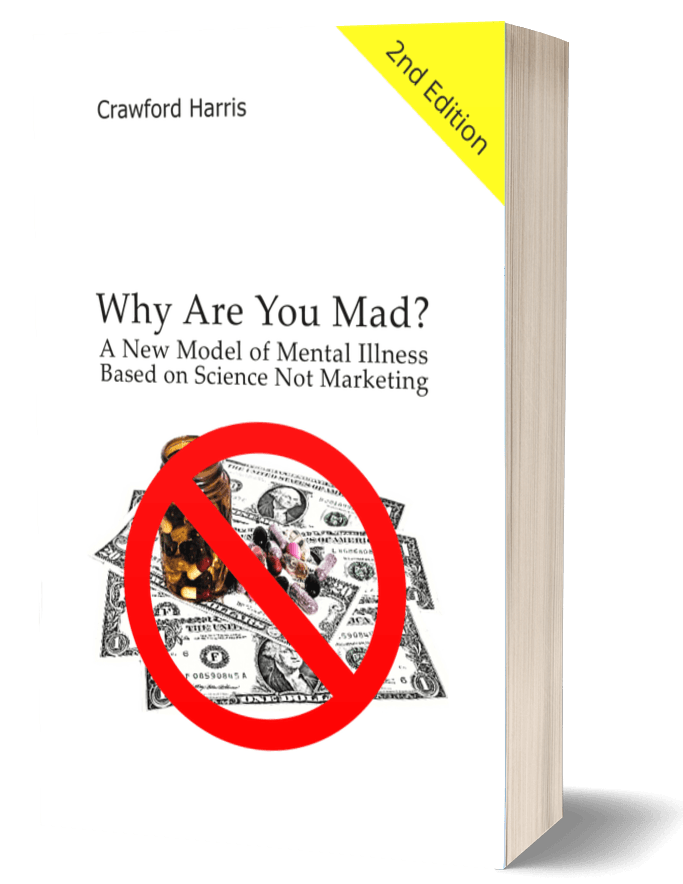The Shape of Things to Come

After gaining more than 90 pounds on a diet following the guidelines of the American Heart Association and the United States Department of Agriculture it was obvious that either they were in the pockets of the food industry or were totally ignorant of the subject. I’m inclined to think it is a combination of both.
Research quickly led me to ban soy from my table. More recently I have eliminated wheat. Many of the recipes that abjure wheat include flax. I have some in my pantry that I have not yet used. Most gluten-free items at the store include a mixture of starches. That is acceptable only for those wishing to gain weight quickly and risk diabetes.
I have not had much success yet in finding sources of food that are grown naturally for an affordable price. My research continues.
The following article is from alternet.org by Martha Rosenberg. Now that I have discovered her work, I wonder that I was not already familiar with such an accomplished, prolific author and journalist. I reference a book of hers below.
It is no secret that our bodies and our environment are swimming in estrogen. Puberty is occurring as early as eight years old in children and recently babies in China have developed breasts. Frogs and fish are becoming “intersex” and losing their male characteristics from excreted estrogens in the environment and waterways. In England, the Daily Mail ran a feature on the phenomenon of women’s bra cup sizes increasing independent of their weights, likely because of environmental and livestock chemicals. The website Green Prophet speculated that women in the Middle East are not yet experiencing cup inflation because their environments have not become similarly estrogenized.
While many people are fans of big boobs, the larger issue of feminized women, men and wildlife should be a wakeup call. Estrogen is blamed for everything from breast and prostate cancer and other hormone-linked conditions to obesity, sexual dysfunction, dropping sperm counts and depression and mood disorders. In studies of women given prescribed hormone drugs, estrogen was linked to lung cancer, ovarian cancer, skin cancer, gall bladder cancer, cataracts urinary incontinence and joint degeneration.
Most of us know we unwittingly get synthetic estrogens (endocrine disrupters) from plastics like BPA, petroleum based products, detergents, cosmetics, furniture, carpeting, thermal receipts and on our food from agriculture chemicals like pesticides, herbicides and fungicides (a good reason to buy organic). But we also get a lot of “natural” estrogens from foods we may eat every day. While these “phytoestrogens” are not as bad as synthetic chemicals, women who are plagued with PMS, fibrocystic disease and water retention, or who are at risk for breast cancer and men who do not want to be feminized may want to use them moderately.
Here are some “good” and “bad” foods that have more estrogen than you may realize—or want.
1. Flax
Flax and especially flax meal has the image of being a healthy superfood. But when you look at a list of the top phytoestrogen-containing foods, flax and flax products are at the very top. A hundred grams of flax packs an astounding 379,380 micrograms of estrogen compared with 2.9 micrograms for a fruit like watermelon. Flax is now widely found in baked goods like bread, bagels and muffins, snack foods, cereals, pasta, drink mixes and used in poultry, swine, beef and dairy cow feed.
It became a popular alternative to fish oil which had been promoted to improve mood, the immune systems and to prevent heart attacks and strokes, especially as concerns about mercury risks in some fish surfaced. A tablespoon of flaxseed oil, which contains alpha-linolenic acid (also found in walnuts and some oils) is “worth” about 700 milligrams of the omega-3 found in fish oil says the Harvard Medical School Family Health Guide. Flax also provides fiber, a substance lacking in our over-processed diets. But there is another reason it may not be the superfood it appears besides its estrogen wallop. Like so many edible plants today, genetically modified versions of flax are rampant, spreading and rarely labeled. Buyer beware.
2. Soy
 What is the second highest phytoestrogen-containing food in most lists? Soy, which packs 103,920 micrograms of estrogen per 100 grams. Low in calories and with no cholesterol, soy has been a mainstay protein of many cultures for centuries and is considered nature’s perfect alternative to meat by many vegetarians and vegans. It has been hailed as a “good” estrogen that could prevent breast cancer and serve as an alternative for hormone replacement therapy, traditionally made from pregnant mare urine.
What is the second highest phytoestrogen-containing food in most lists? Soy, which packs 103,920 micrograms of estrogen per 100 grams. Low in calories and with no cholesterol, soy has been a mainstay protein of many cultures for centuries and is considered nature’s perfect alternative to meat by many vegetarians and vegans. It has been hailed as a “good” estrogen that could prevent breast cancer and serve as an alternative for hormone replacement therapy, traditionally made from pregnant mare urine.
Yet the bloom has partially fallen off soy’s rose. Its possible cancer prevention properties were called into question after some animal studies and groups like the American Cancer Society found themselves defending its moderate use. Like flax, unlabeled GMO soybeans dominate the market and have been linked to sterility and infant death in hamsters.
3. Other Legumes and Common Health Foods
Other “healthy” foods like flax and soy may have more estrogen than you think. Legumes like chickpeas (garbanzo beans) red beans, black-eyed peas, green peas and split peas are also estrogenic and black beans pack 5,330 micrograms of estrogen per 100 grams. Hummus (from chickpeas) has 993 micrograms of estrogen per 100 grams. How about the “healthful” seeds we think of as mingled in trailmix? Sesame and sunflower seeds are among the highest of all estrogenic foods. While their seeds are not a staple of most people’s diets, their oils are widely used in processed and prepared foods. A site for women suffering from the estrogen-linked endometriosis advises against sunflower oil as well as safflower, cottonseed and canola oils and recommends only olive or grapeseed oil.
Other ingredients that can amount to a side dish of estrogen are alfalfa sprouts, licorice and the flavorings red clover and fennel, sometimes found in teas. Food ingredients in personal care products can also have estrogenic effects. Tea tree oil found in some shampoos, soaps and lotions can enlarge the breasts of boys reported ABC news. And sore and tender breasts have also been reported from using a shampoo with pomegranate.
4. Animal Products
On most lists of products containing estrogen, animal products like milk and beef are at the very bottom. Milk, for example, is said to provide 1.2 micrograms of estrogen per 100 grams. Unfortunately, most “research” that assures the public that hormones used in meat production or milk production (like Monsanto’s rBGH) result in less estrogen are funded by Big Ag. Two features betray the Big Ag-funded research —it claims there is no difference between hormones that occur “naturally” in the human body and synthetic hormones, and it claims there are no residues of the latter. If synthetic hormones are so safe, why would we mind residues? The European Union disagrees about the dangers and boycotts US beef, which is swimming in the hormones oestradiol-17, trenbolone acetate, zeranol and melengestrol.
As for “no residues,” a scientific paper called “Detection of Six Zeranol Residues in Animal-derived Food by HPLC-MS/MS,” disputes the claim. Zeranol, an estrogen-like drug widely used in US livestock production is especially controversial. “Our laboratory has reported that long-term exposure to either Z [zeranol] or E2 [estradiol-17β] can induce transformation of human breast epithelial MCF-10A cells,” says a 2009 paper in Anticancer Research. Translation: it can contribute to breast cancer: “The proper evaluation of the safety of Z [zeranol] is of both public health and economic importance.”Another paper reports “breast irritation” in people exposed to nothing but the clothing of those working around zeranol. This is an ingredient used in US meat?
A paper which appeared in Science of the Total Environment examines the outbreak of precocious puberty and breast development of children in Italy and Puerto Rico in the late 1970s and 1980s and attributes the symptoms to zeranol-like “anabolic estrogens in animal foods.” In both occurrences, the symptoms disappeared when the hormone-laced food was removed. Zeranol is found in meat, eggs and dairy products “through deliberate introduction of zeranol into livestock to enhance meat production,” says the paper. It is “banned for use in animal husbandry in the European Union and other countries, but is still widely used in the US. Surprisingly, little is known about the health effects of these mycoestrogens, including their impact on puberty in girls, a period highly sensitive to estrogenic stimulation.”
Martha Rosenberg is an investigative health reporter and the author of Born With a Junk Food Deficiency: How Flaks, Quacks and Hacks Pimp The Public Health (Random House).
If you found this educational, edifying, interesting or otherwise worth your time, this geezer would appreciate a little supplement to those Social Security checks, They forgot to factor in the cost of publishing a blog. I would like to continue being able to afford my daily cup of coffee and pound of caviar.
[wpedon id=”2927″]
Many thanks,
.bre





I’m gone to inform my little brother, that he should also pay a quick visit this weblog on regular basis to obtain updated from hottest gossip.
I really like and appreciate your blog.Really looking forward to read more. Will read on…
Hi there, i read your blog site every now and then and i own an identical one and i also was only wondering should you get a lot of spam responses? If exactly how do you prevent it, any plugin or what you can recommend? I recieve a lot lately it’s driving me crazy so any support is incredibly much appreciated.
I share your problem I have tried many ways, none completely successful. It is less now than it used to be but still a waste of both my time and theirs. It is moderated so that they will not get through.
I’m really enjoying the theme/style of your blog. Do you come across any browser compatibility problems? A handful of my blog audience have complained about my website not working correctly in Explorer but looks great in Firefox. Are you experiencing any ideas to aid fix this problem?
I’m unaware of any specific problems related to browsers. Personally, I depend primarily on Chrome and occasionally use Firefox. Given the lack of complaints, I think my theme works very well. I have been using it since about 2010. It’s very versatile, stable and almost no learning curve. It’s called Thesis and cost me $69 (I think) back then. It’s no longer available. The author moved on to more powerful but very much more complex themes. If you are interested on his current themes, it’s DIY Themes. He’s a fantastic coder, always ahead of his time but I couldn’t keep… Read more »
Pretty great post. I simply discovered your weblog and wanted to mention that We have really loved surfing around your blog posts. In any case I’ll be subscribing in your feed and I’m hoping you write again soon!
Do you mind generally if i quote a few of your respective posts as long as I provide credit and sources to your blog? My blog site is within the very same section of interest as yours and my users would genuinely make use of many of the information you provide here. Please tell me if it ok along with you. Appreciate it!
Go right ahead. I’m flattered.
Hi there, You’ve done a fantastic job. I’ll certainly digg it and personally suggest to my friends. I am confident they will be benefited from this website.
Hmm it looks such as your blog ate my first comment (it had been super long) therefore i guess I’ll just sum it the things i wrote and say, I’m thoroughly enjoying your website. I too am an aspiring blog writer but I’m still new to the whole thing. Are you experiencing any tips for newbie blog writers? I’d really appreciate it.
It depends on why you want to blog. In my case I have had a great deal of varied experiences and education that provides a multitude of perspectives. People are complex. The world is complex. Therefore, the answers can’t be simple. The country is large with major responsibilities. so the government cannot be small. I am old now and just want to pass on what I have learned before I pass on. Respect your readers by giving them something you think is worth their time. Also, be as professional as possible. By that I mean make the effort to eliminate… Read more »